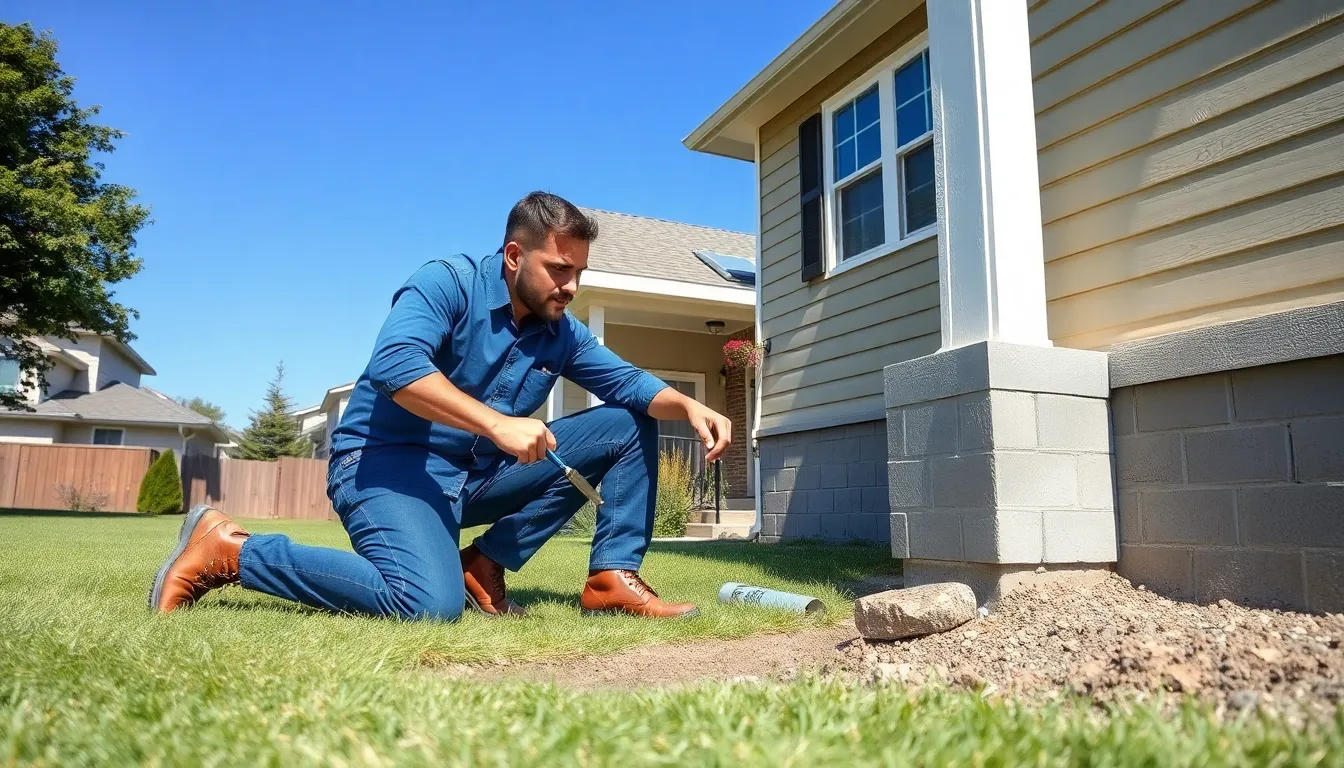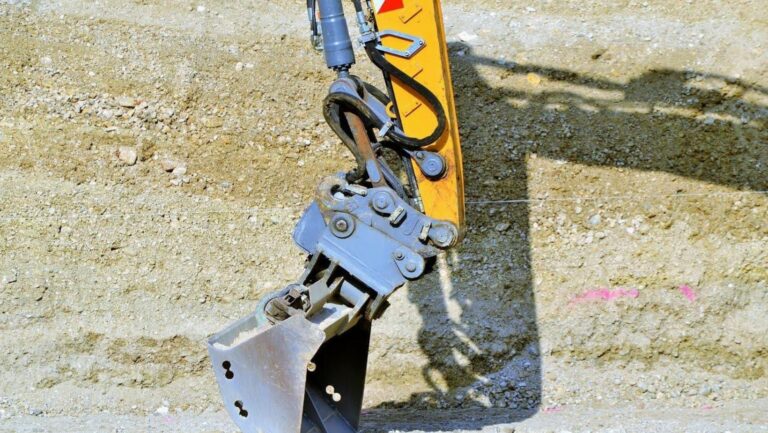Buying a property is one of the biggest investments many will make in their lifetime. Ensuring that the property is in good condition can save buyers from unexpected expenses down the road. A thorough property inspection checklist is an essential tool in this process, helping to identify potential issues before closing the deal.
From structural integrity to plumbing and electrical systems, a well-crafted checklist covers all critical areas of inspection. It not only provides peace of mind but also empowers buyers to negotiate repairs or price adjustments. Understanding what to look for can make a significant difference in the overall satisfaction with a new home.
Table of Contents
ToggleImportance Of A Property Inspection Checklist
A property inspection checklist serves several critical functions in the home-buying process.
- Identifies Potential Issues: The checklist helps buyers uncover problems with structural integrity, roof conditions, and foundational stability. For instance, signs of water damage or foundation cracks signal underlying issues that must be addressed.
- Ensures Safety: Safety hazards, such as faulty wiring or outdated plumbing systems, can significantly impact resident well-being. The checklist aids in recognizing these risks early, allowing for timely remediation.
- Facilitates Negotiation: By documenting needed repairs or deficiencies, buyers gain leverage in negotiations. An inspection report based on the checklist can justify requests for repairs or price reductions, providing financial advantages.
- Increases Buyer Confidence: Knowing the property’s condition instills buyer confidence. A comprehensive checklist ensures thorough evaluation and reduces the likelihood of post-purchase surprises.
- Improves Long-term Appreciation: Addressing issues identified during inspection can enhance property value over time. Buyers who prioritize inspections are more likely to invest wisely, thus securing better returns on their investment.
Using a property inspection checklist streamlines the assessment process, maximizing the benefits for prospective homeowners.
Essential Elements Of A Property Inspection Checklist

A comprehensive property inspection checklist covers several critical areas to ensure thorough evaluation. Each component requires careful scrutiny to identify potential problems.
Structural Components
Structural components include the foundation, walls, ceilings, and roof. Inspect the foundation for cracks, signs of settling, or water damage. Examine walls for peeling paint, mold, and any irregularities. Assess ceilings for water stains or discoloration, indicating leaks. Evaluate the roof for missing shingles, damaged flashing, and wear from weather conditions.
Electrical Systems
Electrical systems encompass wiring, outlets, and the circuit breaker panel. Test outlets for proper function and safety. Identify any exposed or frayed wires, as these pose fire hazards. Check the circuit breaker for labeling accuracy and any signs of overheating or damage. Ensure GFCI outlets are installed in wet areas, such as kitchens and bathrooms.
Plumbing Systems
Plumbing systems consist of pipes, fixtures, and drainage. Inspect pipes for leaks, corrosion, or signs of rust. Check water pressure and hot water availability. Examine fixtures for proper functioning, including faucets and toilets. Assess drainage for slow drains or backups, which may indicate larger issues within the plumbing system.
HVAC Systems
HVAC systems include heating, ventilation, and air conditioning units. Inspect furnaces and air conditioners for age, cleanliness, and operational efficiency. Replace filters regularly to maintain air quality. Evaluate ductwork for leaks or obstructions, as these can impact heating and cooling efficiency. Confirm thermostats are functioning correctly for optimal climate control.
How To Create An Effective Property Inspection Checklist
Creating an effective property inspection checklist requires a systematic approach. A well-structured checklist helps ensure thorough assessments of all critical areas.
Step-By-Step Guide
- Define Inspection Goals: Identify specific objectives for the inspection. Determine if the focus is on structural integrity, safety compliance, or general maintenance.
- Include Key Components: List essential areas for inspection. Cover structural, electrical, plumbing, and HVAC systems to guarantee comprehensive evaluations. Tailor components based on property type and age.
- Develop Evaluation Criteria: Specify criteria for assessing each component. Use clear measures for issues like cracks, leaks, and functionality, enabling consistent evaluations across properties.
- Utilize Visual Aids: Incorporate diagrams or images for clarity. Visual references support understanding of complex systems, ensuring nothing is overlooked.
- Prioritize Items: Rank checklist items by importance. Focus on critical systems first, which ensures major issues aren’t neglected during the inspection process.
- Gather Documentation: Compile reference materials, including previous inspection reports, local building codes, and maintenance records. Documentation enhances the inspector’s knowledge and context.
- Review and Revise: Regularly update the checklist based on evolving standards and feedback from past inspections. Continuous improvement keeps the checklist relevant and effective.
Common Mistakes To Avoid
- Rushing Inspections: Avoid hurried evaluations that increase the likelihood of missing critical issues. Allow ample time for each component assessment.
- Neglecting Minor Issues: Don’t overlook minor problems that could indicate larger issues. Every detail matters, as even small repairs can signal significant underlying concerns.
- Forgetting Follow-Up Actions: Ensure follow-up steps are included for issue resolutions. Forgetting this may lead to unresolved problems post-inspection.
- Overgeneralizing Conditions: Avoid vague descriptions of issues. Specify findings to aid understanding and facilitate negotiations or repairs.
- Ignoring Seasonal Impacts: Consider seasonal effects on property conditions. For instance, inspect roofs and gutters thoroughly after heavy rain or snow.
- Inadequate Training for Inspectors: Ensure inspectors receive proper training. An untrained inspector may miss critical issues or lack the expertise needed for thorough evaluations.
- Using Outdated Checklists: Regularly review and update checklists to reflect current industry standards and practices. Outdated information can lead to missing key insights.
Utilizing The Property Inspection Checklist
A property inspection checklist plays a vital role in both the purchasing journey and ongoing maintenance. It offers structure and clarity to assess property conditions effectively.
During The Purchase Process
During the purchase process, utilizing a property inspection checklist aids in identifying critical issues that could impact the buying decision. Buyers should systematically evaluate each component, focusing on structural integrity, electrical systems, and plumbing conditions. Inspectors should check for:
- Foundation stability: Look for cracks, moisture intrusion, and overall integrity.
- Roof condition: Assess shingles, flashing, and potential leaks.
- Electrical safety: Verify wiring, outlets, and control panels for compliance and safety.
- Plumbing integrity: Inspect for leaks, drainage adequacy, and water pressure.
Documenting findings helps buyers negotiate repairs or price adjustments effectively. The checklist serves as an essential tool for ensuring that potential liabilities are understood before finalizing a purchase.
For Maintenance Purposes
For ongoing maintenance, a property inspection checklist provides a proactive approach to preserving property value. Regular inspections allow homeowners to detect and address issues early. Key maintenance considerations include:
- Seasonal evaluations: Check HVAC systems before summer and winter seasons to ensure efficiency.
- Roof maintenance: Inspect for wear and potential storm damage regularly.
- Plumbing checks: Monitor for leaks and water usage to prevent costly water bills.
- Electrical inspections: Routinely verify safety measures and the functionality of outlets and appliances.
By maintaining a checklist, homeowners can ensure timely repairs and improvements, enhancing both safety and property value over time. Regular reviews help prioritize maintenance tasks, ensuring a systematic approach to property upkeep.
A property inspection checklist is an invaluable tool for any homebuyer. By systematically evaluating critical areas of a property, it empowers buyers to make informed decisions. This proactive approach not only uncovers potential issues but also enhances negotiation power during the purchasing process.
Moreover, maintaining a checklist fosters ongoing property care, ensuring that homeowners can address concerns before they escalate. With a well-structured checklist, buyers can confidently navigate the complexities of home buying and ownership, ultimately securing a valuable investment that stands the test of time.



